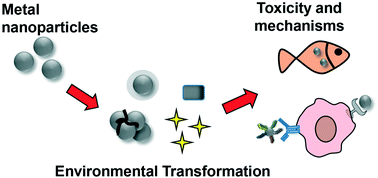The effects and the potential mechanism of environmental transformation of metal nanoparticles on their toxicity in organisms
Abstract
The rapid development of nanotechnology has raised great concern over its effect on environmental health and safety (EHS). Due to their novel physicochemical properties, metal nanoparticles (MNPs) are the most widely adopted engineered nanomaterials that have been utilized in industrial production, environmental governance and commercial products. Although significant progress has been made towards the toxicity assessment of pristine MNPs, knowledge gaps regarding their EHS impacts have yet to be addressed. Transformation of MNPs in the environment can result in toxicity of transformed nanoparticles being different from that of pristine particles. Despite recent investigations into MNP-mediated toxicity, most of them only focused on the toxic effects of pristine nanoparticles, which does not fully elucidate the harmful effects of MNPs under environmental exposure conditions. Therefore, it is crucial to achieve a comprehensive understanding of the transformation-related toxic properties of MNPs. In this review, we briefly presented the main transformation processes in the natural environments followed by summarizing the toxicity of transformed MNPs in organisms and cells compared to that of the pristine forms. Finally, we also hypothesized possible mechanisms through which transformation could affect MNP-induced toxicity under environmental exposure.

- This article is part of the themed collections: Best Papers 2018 – Environmental Science: Nano and Best Papers from 2018 in the Environmental Science Family of Journals


 Please wait while we load your content...
Please wait while we load your content...